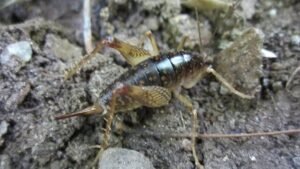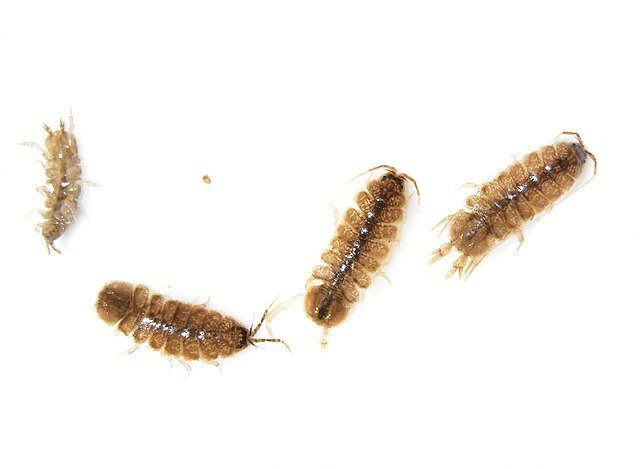Camel Crickets (Spider Crickets): How to Identify, Get Rid of Them, and Keep Them Away
 Camel crickets, also known as spider crickets or “sprickets,” are unusual, hump-backed insects that often cause surprise (and sometimes panic) when they suddenly jump across a basement or crawl space. Unlike their chirping cousins, camel crickets are silent. They do not sing or bite, but their presence indoors can still be disturbing. In some cases, large infestations can cause real problems for fabrics, stored items, and even indoor air quality.
Camel crickets, also known as spider crickets or “sprickets,” are unusual, hump-backed insects that often cause surprise (and sometimes panic) when they suddenly jump across a basement or crawl space. Unlike their chirping cousins, camel crickets are silent. They do not sing or bite, but their presence indoors can still be disturbing. In some cases, large infestations can cause real problems for fabrics, stored items, and even indoor air quality.
This article explains what camel crickets are, where they come from, how to identify them, and—most importantly—how to get rid of them effectively.
What Are Camel Crickets?
Camel crickets (family Rhaphidophoridae) are nocturnal insects with a distinctive arched back that makes them look like a tiny camel. They have very long legs, especially their hind legs, which they use for impressive jumps. Their long antennae give them a spider-like appearance, which is why many people confuse them with large spiders at first glance.
Color: Light brown to dark brown with mottled patterns.
Size: Usually 13–33 mm (0.5–1.25 inches) long, although some species in Asia and Australia can grow larger.
Behavior: Non-biting, non-stinging, and silent. They rely on jumping as their main defense.
Diet: Omnivorous scavengers. They feed on fungi, decaying plant material, cardboard, fabrics, and even other insects. Indoors, they may chew on clothing, paper, or stored food packaging.
Where Do Camel Crickets Live?
Camel crickets thrive in dark, damp, and cool environments. Outdoors, they are common under mulch, logs, leaf litter, and stones. Indoors, they usually appear in:
Basements
Crawl spaces
Utility rooms
Sheds and garages
Laundry rooms
Moisture is the key factor. Homes with high humidity or poor ventilation provide perfect conditions for them to multiply.
Are Camel Crickets Dangerous?
Camel crickets are not directly dangerous to humans. They do not bite, sting, or spread known diseases. However, they can still be considered pests because:
Damage to property: They may chew fabrics, upholstery, carpets, and cardboard boxes.
Contamination: Large infestations produce droppings that can create unpleasant odors and potentially contribute to mold growth.
Psychological nuisance: Their sudden jumping behavior and spider-like look can cause fear or stress, especially when they appear in groups.
In agricultural settings, some species of camel crickets have been observed feeding on seedlings and crops, although this is more common in Asia than in North America or Europe.
How to Identify a Camel Cricket Infestation
Signs that you might have camel crickets in your home or business include:
Sightings: Spotting live crickets, especially in basements at night.
Damage: Chewed holes in cardboard boxes, paper, or clothing.
Droppings: Small dark specks in corners or near stored materials.
Moisture issues: If your basement is damp, chances are high that camel crickets will eventually move in.
Unlike other crickets, you will not hear chirping—silence is part of their identity.
Are Camel Crickets invasive?
Camel crickets (Rhaphidophoridae family) are not considered an invasive bug in most regions, but a few species—especially Diestrammena asynamora, also known as the greenhouse camel cricket or the Asian camel cricket—have spread beyond their pgysical environment in Asia. These species are now common in North America and parts of Europe, living in basements, garages, and damp crawl spaces. While they don’t bite or damage structures, they can multiply quickly indoors, if the conditions allow it, and become a nuisance, especially in humid environments.
How to Get Rid of Camel Crickets Indoors
1. Reduce Moisture
Camel crickets cannot survive long without humidity. Fix leaks, improve ventilation, and use a dehumidifier in basements and crawl spaces. Sealing foundation cracks and installing vapor barriers can also help.
2. Remove Attractants
Store clothing and fabrics in sealed plastic bins instead of cardboard boxes.
Reduce clutter in storage areas.
Vacuum regularly to remove crumbs and organic matter.
3. Physical Barriers
Seal entry points such as gaps under doors, cracks in the foundation, and vents without screens. Even small openings can be an invitation.
4. Traps
Sticky traps (glue boards) are highly effective for catching camel crickets indoors. Place them along walls, near water heaters, or in corners of basements where activity is noticed.
5. Chemical Control
When infestations are severe, insecticidal sprays or dusts can be applied. Active ingredients like boric acid, pyrethrins, or bifenthrin are commonly used in pest control products. Always follow the label instructions and ensure products are safe for indoor use.
For homeowners who want a ready-to-use option, professional-grade sprays and glue traps are available online. Many pest control suppliers ship across the USA, Canada, Australia, and Europe.
6. Professional Pest Control
If DIY solutions do not solve the problem, contact a licensed pest control professional. They can apply targeted treatments and identify underlying moisture problems that attract the infestation.
How to Prevent Camel Crickets from Returning
Keep humidity below 50% indoors.
Install door sweeps and repair window screens.
Use landscaping techniques to reduce moisture around the foundation (remove mulch near walls, fix gutter drainage).
Store items off the floor in basements and garages.
Inspect regularly during summer and fall, when populations peak.
Q&A
Do camel crickets bite?
No, camel crickets do not bite humans. They lack the mouthparts for biting skin. They may nibble on fabrics or paper, but they are harmless to people.
Are camel crickets harmful to pets?
Camel crickets are not toxic or venomous. Cats and dogs sometimes chase or eat them without consequences, although large numbers indoors can cause stress to pets as well.
How to get rid of camel crickets naturally?
Natural control methods include reducing humidity, using sticky traps, and sealing entry points. Some people also use diatomaceous earth powder around entry points for a chemical-free solution.
Why do I have camel crickets in my basement?
The main reason is moisture. Basements and crawl spaces that are damp and poorly ventilated create the perfect environment for camel crickets to breed.
Are camel crickets good or bad for the garden?
Outdoors, camel crickets usually feed on decaying organic matter, which can actually help in composting. However, in very high numbers, they may chew on young plants or seedlings.
Global Presence of Camel Crickets
Camel crickets are found worldwide.
United States & Canada: Common in basements and crawl spaces, especially in humid regions.
Europe: Found mostly in southern and central areas, often in caves and damp houses.
Asia & Australia: Some of the largest species live in these regions, where they can become agricultural pests.
Africa & South America: Less studied, but species exist in forested and cave habitats.
Their global distribution means control strategies are similar, but local climate and building design can affect prevention methods.
Conclusion
Camel crickets are not dangerous, but they are unwelcome guests in basements, crawl spaces, and other damp areas. Controlling moisture, sealing entry points, and using traps are the most effective DIY measures. For large infestations, professional pest control is the safest solution.
If you act quickly and address the moisture problem, you can keep your home or business free of these silent jumpers.
Ιf you found this guide useful, you can explore more in-depth articles on our blog about pest identification, prevention, and safe control methods.
Disclaimer
This article is for informational purposes only. Pest control laws and approved chemicals vary by country. For best results and legal safety, we strongly recommend contacting a licensed pest control professional in your local area. Always make sure that the pest control technician is properly certified or licensed, depending on your country’s regulations. It’s important to confirm that they only use approved products and apply them exactly as instructed on the product label. In most places in Europe, UK, or USA, following label directions is not just best practice—it’s the law.
Written by
Nasos Iliopoulos,
BSc Agronomist & Certified Pest Control Expert
Scientific Director, Advance Services (Athens, Greece)
Licensed Pest Control Business – Ministry of Rural Development & Food (GR)
References
NCSU Extension – Camel Crickets
The Spruce – How to Get Rid of Camel Crickets

